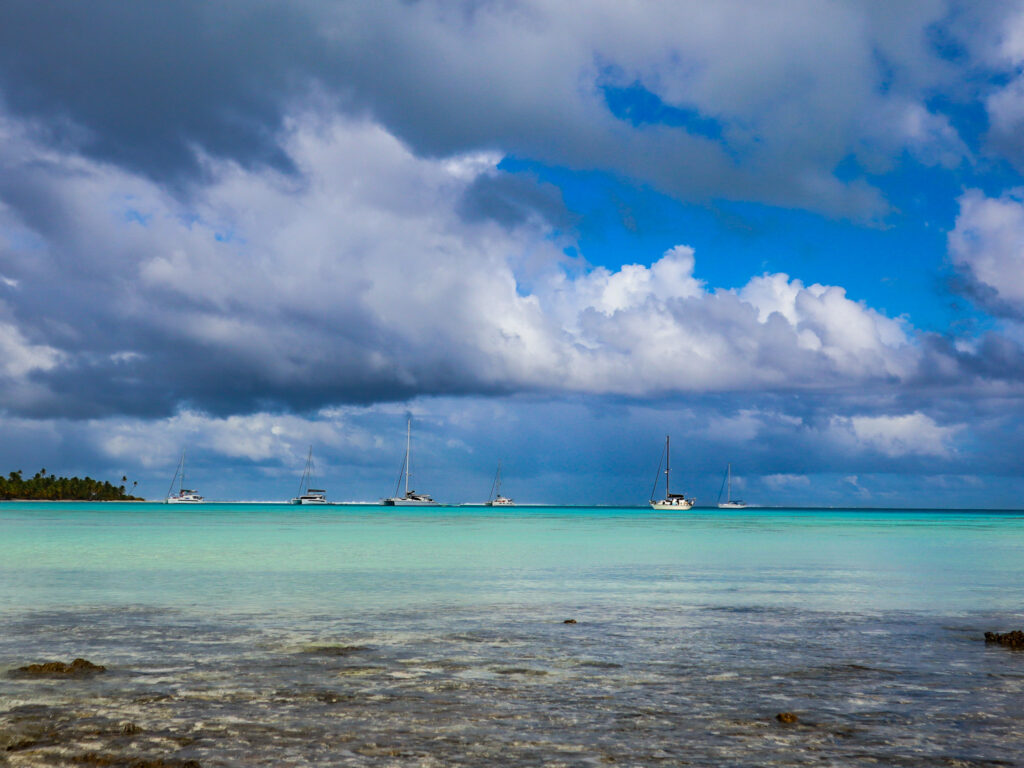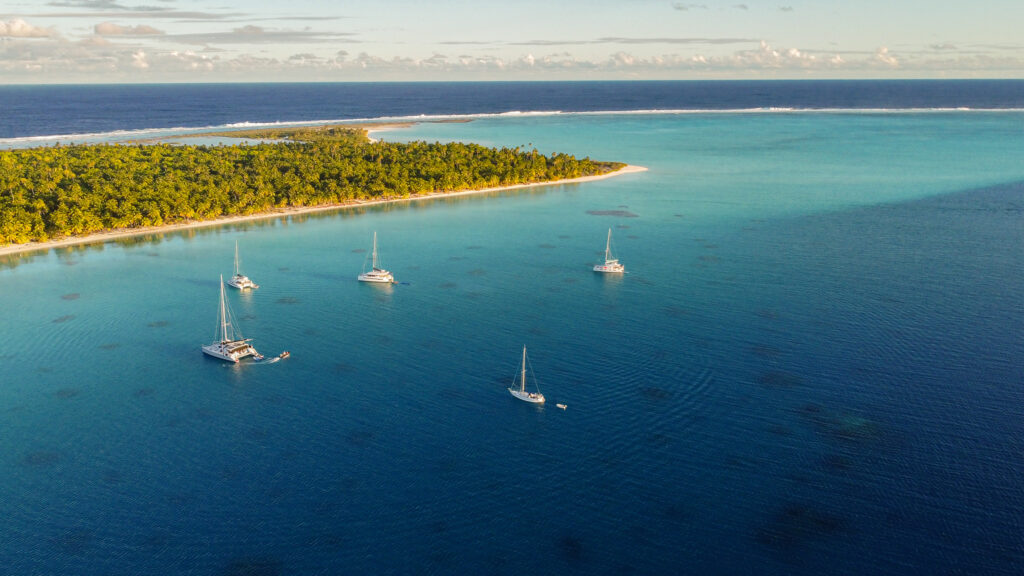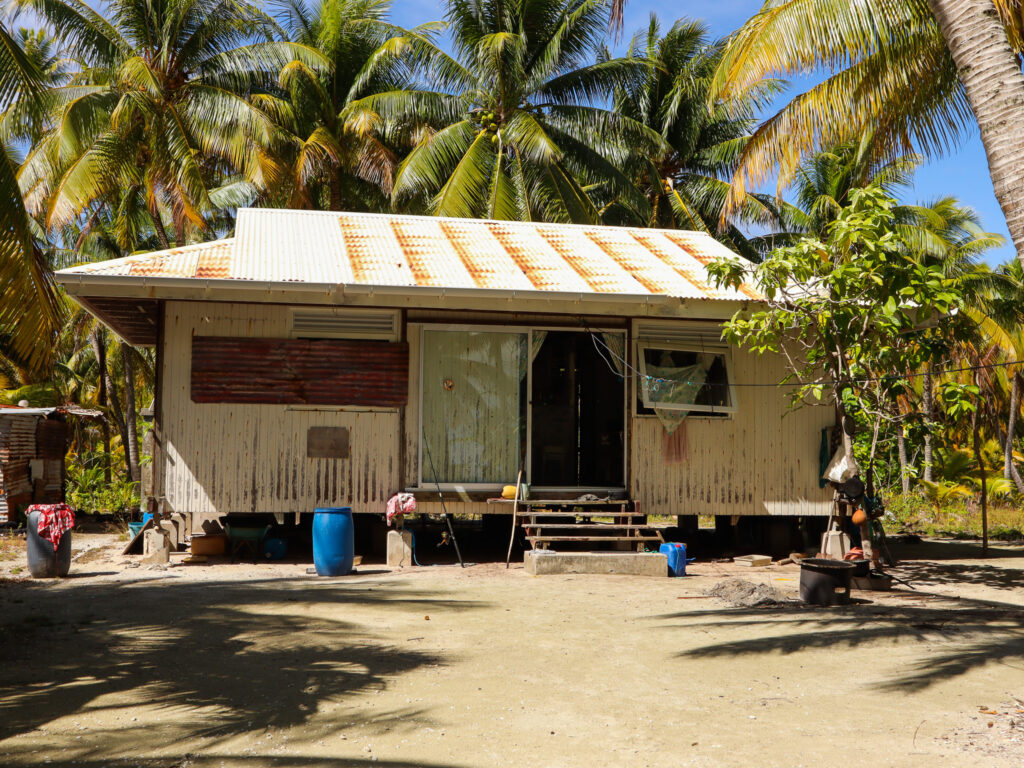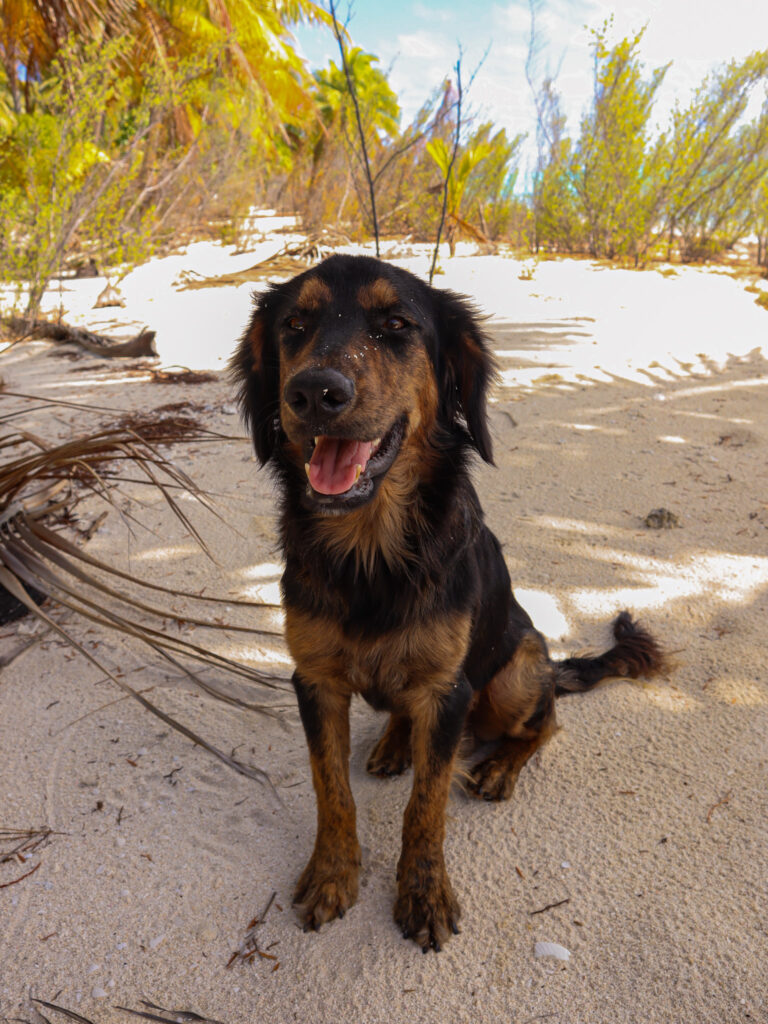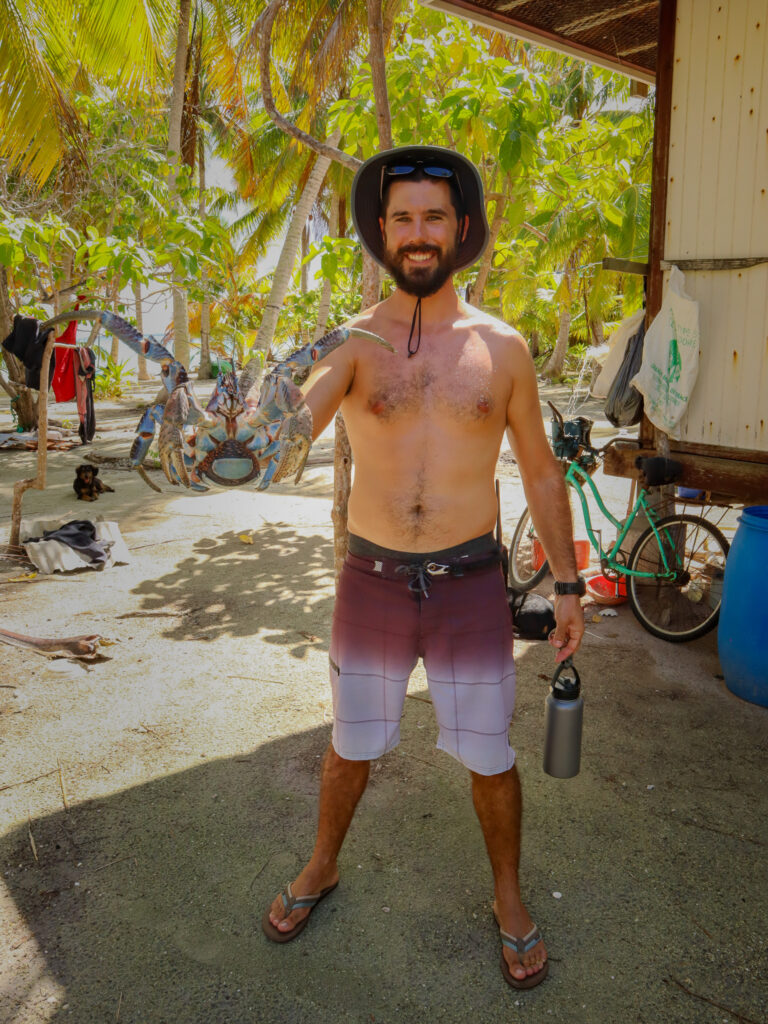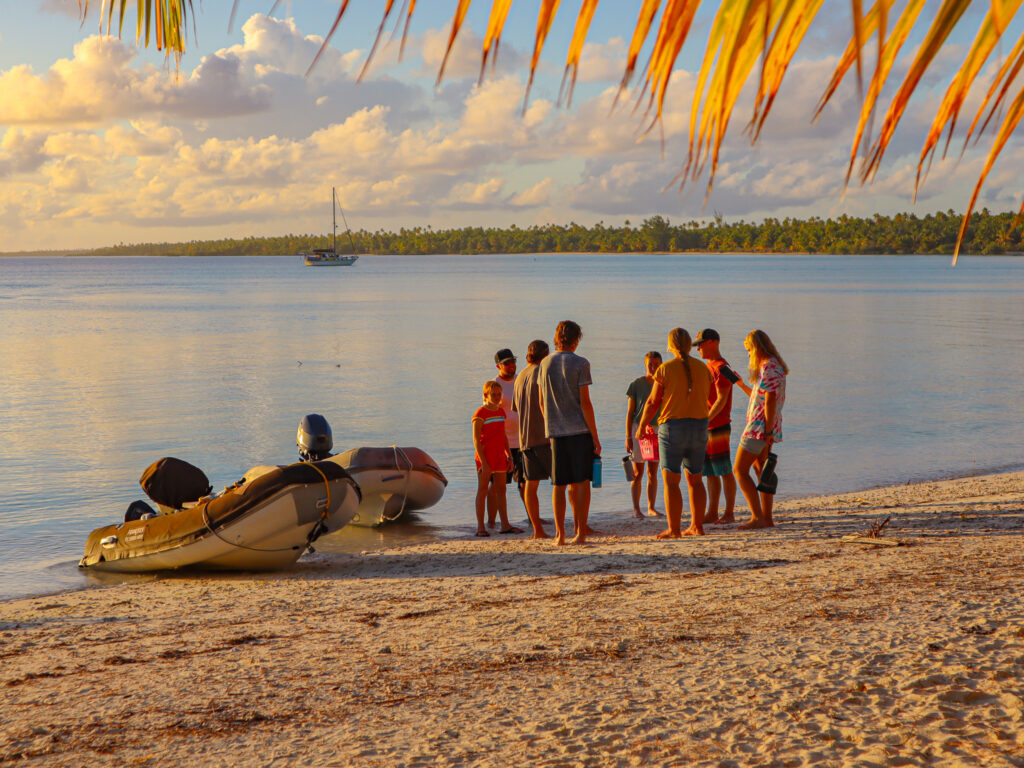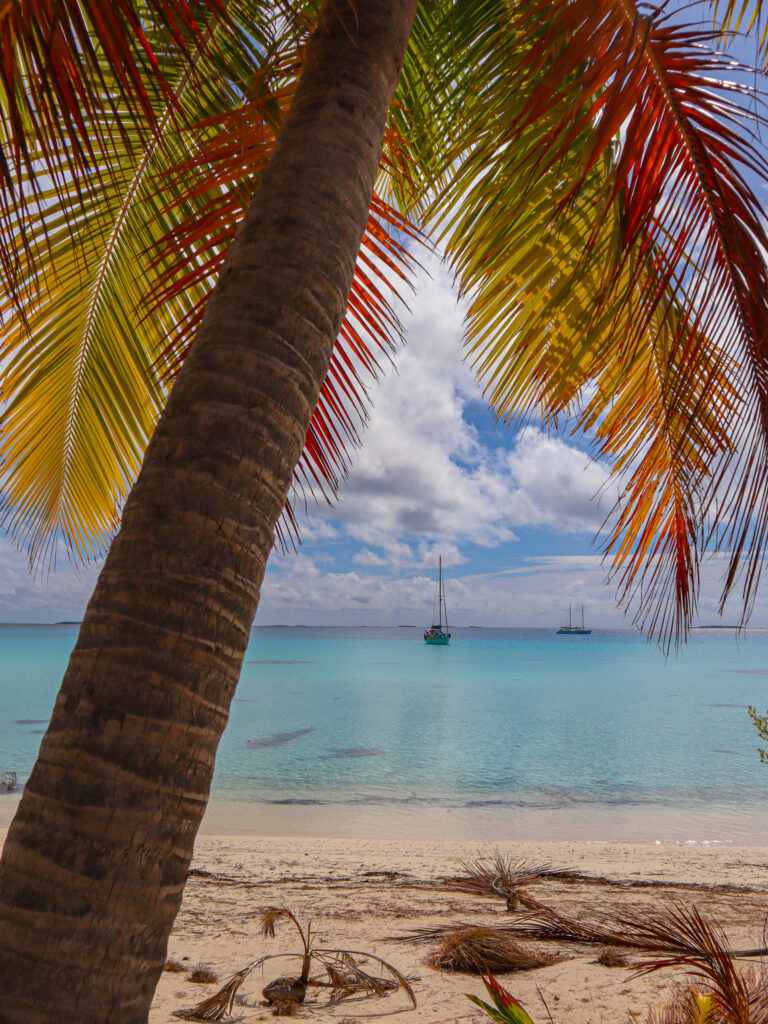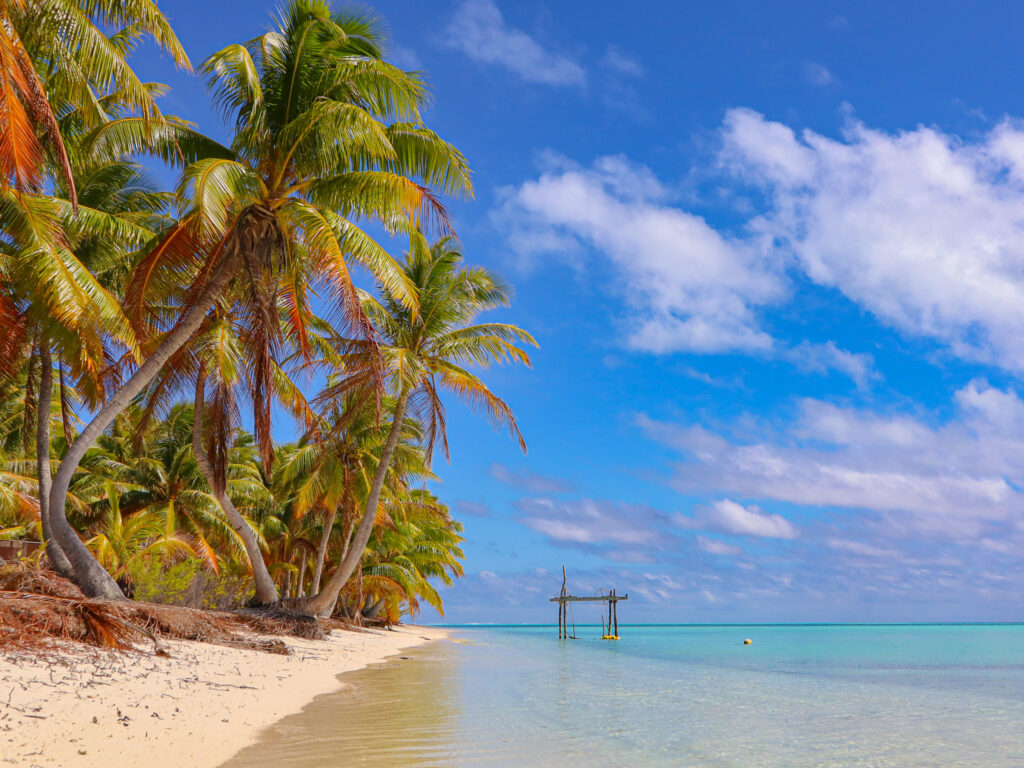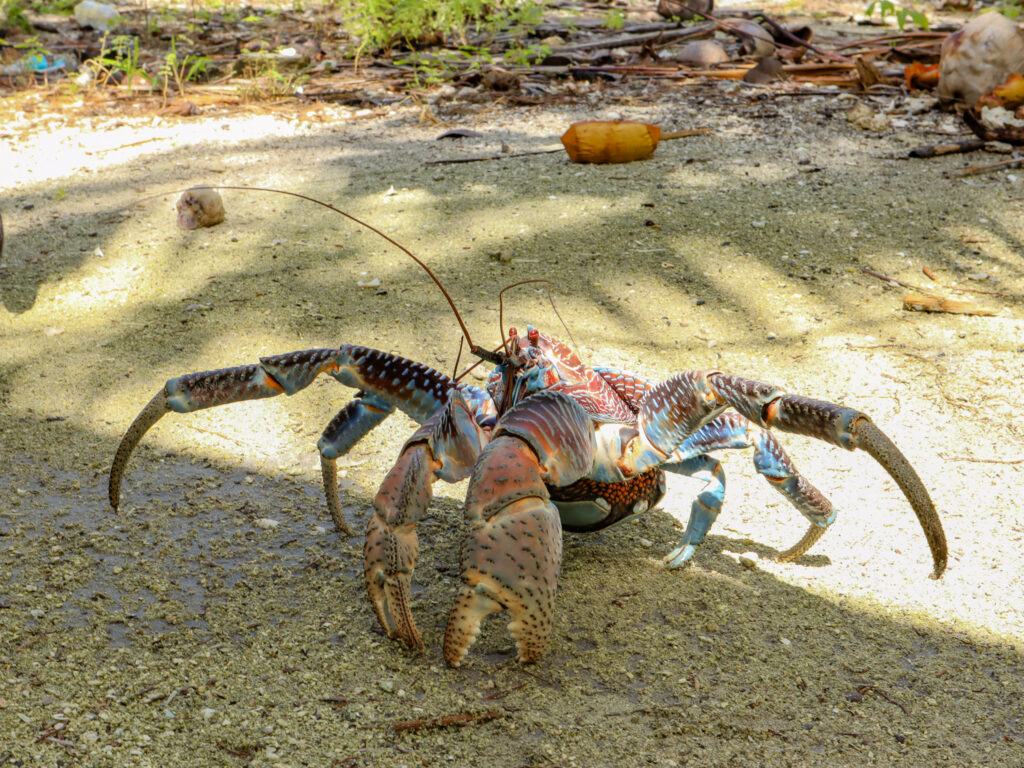Our first day in Maupihaa was a cruiser’s dream, filled with baby shark paddle boarding, an incredible snorkel through the atoll pass, and ending with a beach bonfire and roasted marshmallows. I couldn’t have asked for a better day and was excited to see the rest of the island. Like the Tuamotus, Maupihaa is an atoll with no inner island, only a circle of reefs and motu islets filled with palm trees. Unlike the Tuamotus’s shores, which are composed of chunks of dead coral, Maupihaa had a seemingly endless expanse of white sandy beaches, easy on the toes.
After two nights anchored at the northern end of the atoll, Eitan spent the morning trying to download the weather forecast to estimate how much time we would have in Maupihaa before a weather window opened for our passage to Rarotonga, in the Cook Islands. In today’s modern age, we rely on a slow satellite phone connection to download weather files which can take hours and often fail during the download, needing to be reconnected over and over. Hopefully, Starlink will be available soon and this will be a thing of the past, but for now, it’s all we have.
Based on Eitan’s body language and the number of profanities mumbled, I could tell something was wrong. The satellite phone was acting up, making it impossible for him to get good information on the extended forecast. He could read that, in the near term, the wind and swell would be picking up from the south, meaning we should head to the anchorage at the southeastern end of the atoll. It was an easy hour-long trip, but by the time we set the anchor, Eitan seemed even more distressed than before and said the only words I didn’t want to hear: “We should leave for Rarotonga… now.” But we just arrived and had hardly explored this paradise!
The limited forecast he was able to download showed that if we left right away, we could motor through a dead zone for two days then motor upwind, bashing for the last day or two. This didn’t sound pleasant at all, so I knew the alternative must be even worse. If we didn’t leave now, we would be stuck for at least two more weeks as giant weather systems stirred up the seas down south. And after two weeks, who knows what the forecast will say and it might be much less pleasant than the current window we were presented with. We would also be getting low on food, fuel, and cooking gas, not to mention Evan was only supposed to be onboard for 2-3 weeks and he was already approaching his 4th.
The idea of leaving felt so rushed and impulsive, plus we hadn’t really gone to shore yet or met any of the other cruisers. Wasn’t this the paradise we had been searching for in the entire South Pacific? Since we had already checked out of the country, we were no longer up against any visa timelines and could finally relax. Even though my gut told me we should stay, I told Eitan that I was impartial and supported whatever decision he thought was best for the boat. After discussing with Evan and making sure his wife wouldn’t leave him after being gone for so long, Eitan made the decision to stay put. He would then spend the next two weeks regretting this decision as the forecast began looking worse and worse in the days to come.
To take Eitan’s mind off things, I suggested we go to shore for a walk. We strolled the beach until we were greeted by a couple of dogs, then a local man who we came to know as Peter (or Pierre). Peter spoke some broken English and told us he lived on the island for the last several years. Normally, the population of the island is around 40 but almost everyone was on another, more populated island to celebrate the annual cultural festival, leaving only 7 residents during our time there. The supply ship only comes to this island twice per year and didn’t come at all for almost two years during COVID.
He asked when we had arrived, then insisted that we have our official Maupihaa welcome coconuts, grabbing a long hook and popping some off of the nearby tree. After he opened them for us, I took a sip and what I tasted was unlike any coconut water I’d ever had. It was light, perfectly sweet, and almost seemed bubbly and carbonated. We drank many coconuts during our time there and each was just as delicious as the last. Peter always insisted these were special “Maupihaa coconuts”.
Peter also offered to take us coconut crab hunting and ushered us over to some large, plastic bins on the side of his house. I jumped as I saw the massive creature that he pulled out of a barrel. I’d never seen a coconut crab before and had no idea they were that big! He set it on the ground and instructed us on how to pick it up but I was too scared to go anywhere near it.
Apparently, Peter had taken some of the other cruisers out hunting for coconut crabs the previous night and had about 6 crabs in separate barrels. Each one had a variety of colors ranging from red and orange to blue and purple. As we were leaving, one of the other boats came to shore to collect their crabs and we watched as they impaled them, one by one, through the chest. It seemed to be a quick death but we felt bad for these creatures and decided against any future plans for coconut crab hunts.
We were invited to a coconut crab potluck that afternoon. The families and crews from the half dozen boats in the anchorage gathered onshore around sunset. Somehow, we found ourselves, once again, with the kid catamarans we initially met several weeks before, in the Tuamotus. Between the three big Mormon families and two other catamarans, it was quite a large gathering! Peter’s small picnic table was covered with all kinds of foods and stews made from the crabs caught the night before. My favorite was a coconut crab gumbo which paired well with the fresh bread I baked earlier. Even though we were stuck on an island in the middle of nowhere, it was already starting to feel like home!
